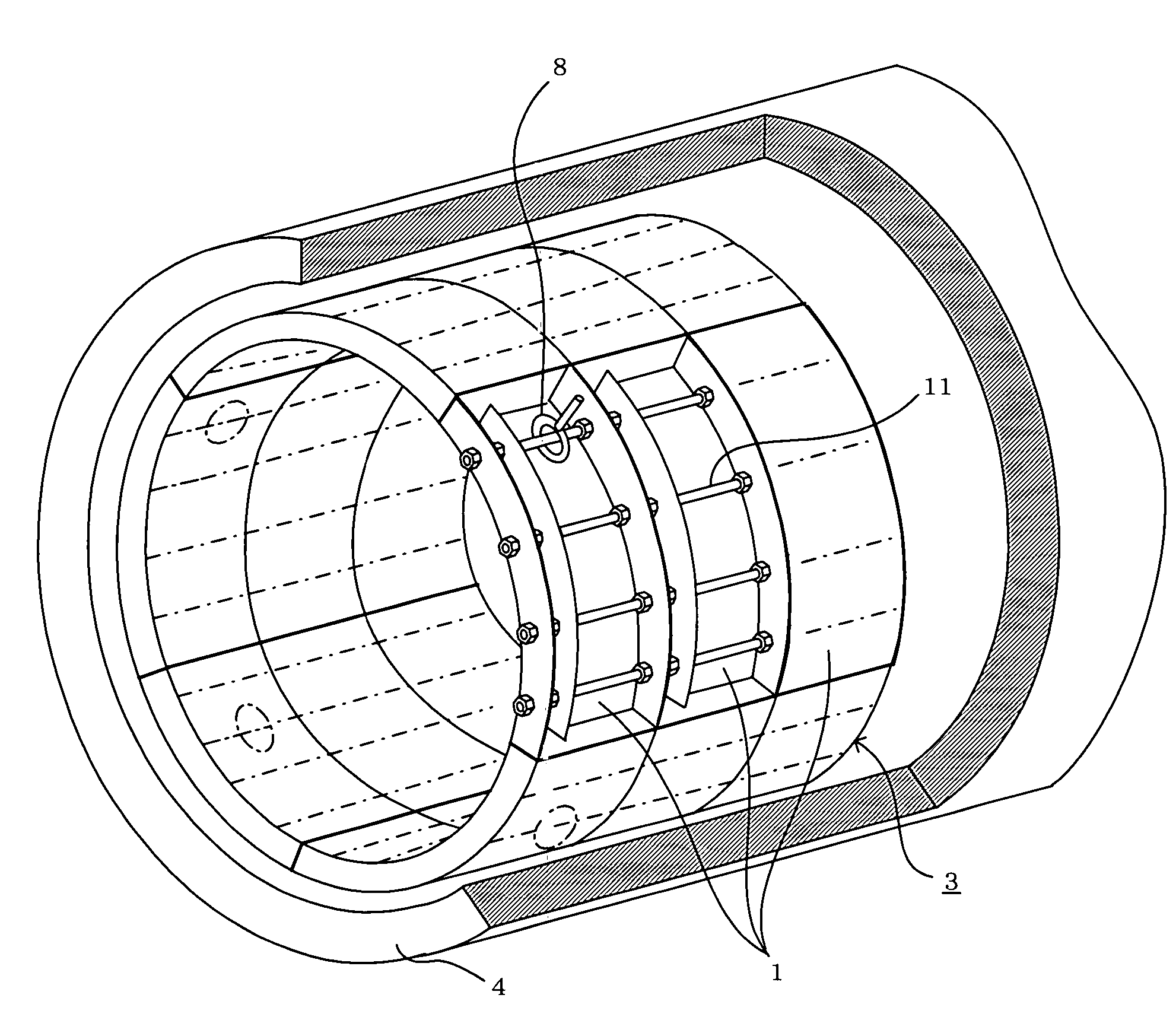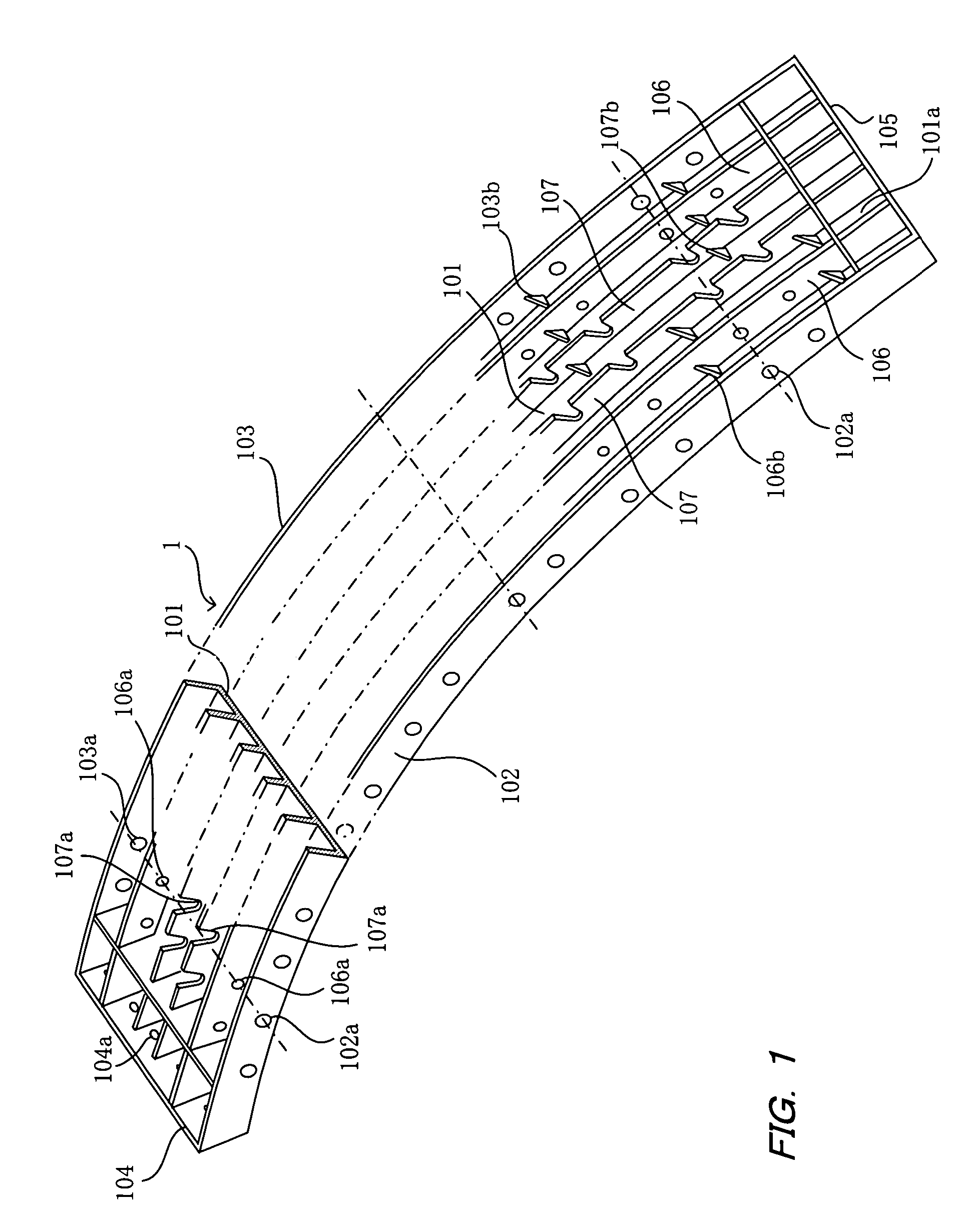Method for laying a rehabilitating pipe
a rehabilitating pipe and pipe technology, applied in the direction of sewer pipelines, shaft equipment, instruments, etc., can solve the problems of affecting the work efficiency of workers, affecting the efficiency of workers, and the rehabilitating pipe unfortunately floats above the aforementioned position, so as to prevent the deformation of the rehabilitating pipe, reduce the thickness, weight, and the effect of reducing the cost of the segments
- Summary
- Abstract
- Description
- Claims
- Application Information
AI Technical Summary
Benefits of technology
Problems solved by technology
Method used
Image
Examples
Embodiment Construction
[0019]The present invention will be described based on preferred embodiments, referring to the drawings in which a round rehabilitating pipe is shown whose cross sectional shape orthogonal to the longitudinal direction is round; however, it is understood that the method of the present invention can also be applied even to the laying of a rehabilitating pipe having another shape, such as a rectangle.
[0020]An existing pipe 4 such as a round sewer pipe is rehabilitated using a rehabilitating pipe 3 whose outer diameter is a prescribed amount less than the inner diameter of the existing pipe 4, as shown in FIG. 5. The rehabilitating pipe 3 is laid inside the existing pipe 4 by coupling segments 1 in the circumferential and longitudinal directions of the existing pipe 4.
[0021]One segment 1 serves as an assembly unit for the rehabilitating pipe 3 and, as shown in FIG. 1, comprises an inner plate 101, side plates 102 and 103, end plates 104 and 105, and respectively two each of reinforcing...
PUM
 Login to View More
Login to View More Abstract
Description
Claims
Application Information
 Login to View More
Login to View More - R&D
- Intellectual Property
- Life Sciences
- Materials
- Tech Scout
- Unparalleled Data Quality
- Higher Quality Content
- 60% Fewer Hallucinations
Browse by: Latest US Patents, China's latest patents, Technical Efficacy Thesaurus, Application Domain, Technology Topic, Popular Technical Reports.
© 2025 PatSnap. All rights reserved.Legal|Privacy policy|Modern Slavery Act Transparency Statement|Sitemap|About US| Contact US: help@patsnap.com



